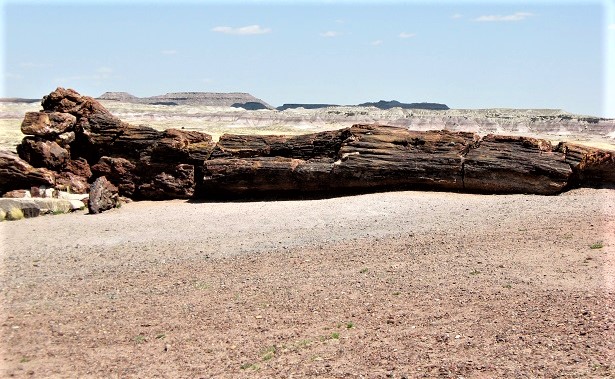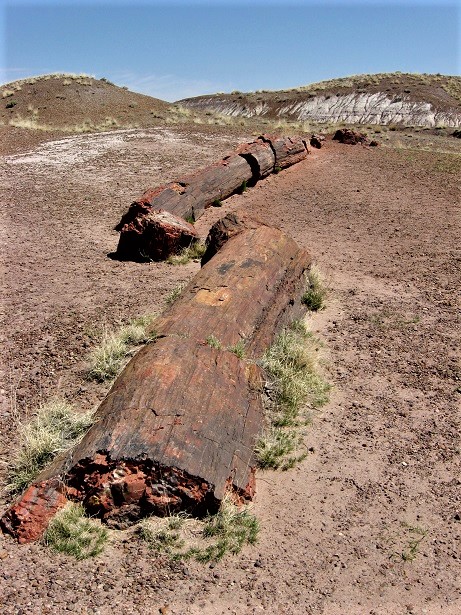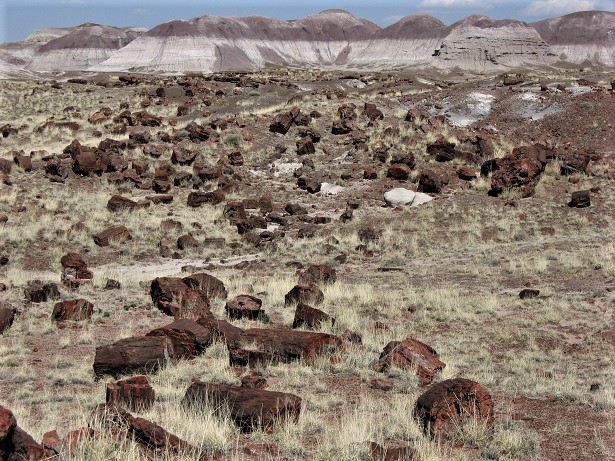
Explore the Ancient Trees in the Petrified Forest (updated 2023)
The Petrified Forest is not much of a forest. There are no trees. The area consists of semi-desert steppe and badlands. So why is it called a forest?
What happened to the Trees?
There was a humid sub-tropical forest here about 225 million years ago in the Triassic Period. All was fine in the forest until approximately 60 million years ago, when tectonic activity pushed the area upward, exposing it to erosion from the forces of wind and water. The trees and other plants were gradually destroyed, and eventually, nothing was left except dirt, sand and rock.
Fossils
Typically, most organic matter, such as trees, other plants, and animals, quickly rot away once they are dead and eventually, no trace of them remains. However, if a tree or animal is covered rapidly by mud and deprived of oxygen before it deteriorates, and then the area becomes dry, the plant or animal may, over long periods of time, become a fossil. This happens to less than 0.1 per cent of organic material. A Fossil appears more like a rock than organic matter. Fossils are, in fact, petrified forms of what was once a prehistoric plant or animal.
Permineralization
In buried plants or animals, if the conditions are right, minerals from groundwater replace the empty spaces in the object once occupied by liquids or soft material. Once there are no more liquid or soft areas, the matter becomes a solid object and hardens over millions of years into a fossil. This process is called permineralization.
Exposure
After being buried for millions of years, sometimes erosion will take away soft soil and, once again, expose the fossil to the surface. However, most fossils will never be found.
Petrified Forest National Park
OK, enough about geology. For the average tourist, it is sufficient to view and wonder over the petrified remains of this ancient forest. This National Park, located in what is now Arizona, was once a vast forest. Today, you can drive around the park and see the petrified remains of some of the trees.
The park visitor’s centre has an orientation movie, fossil exhibits, books, etc.
Rock Crystal
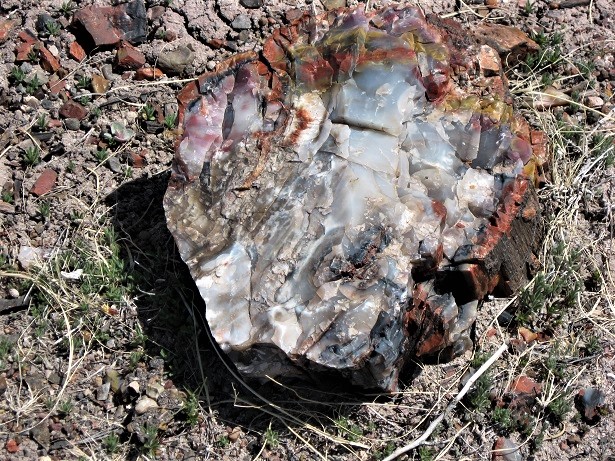
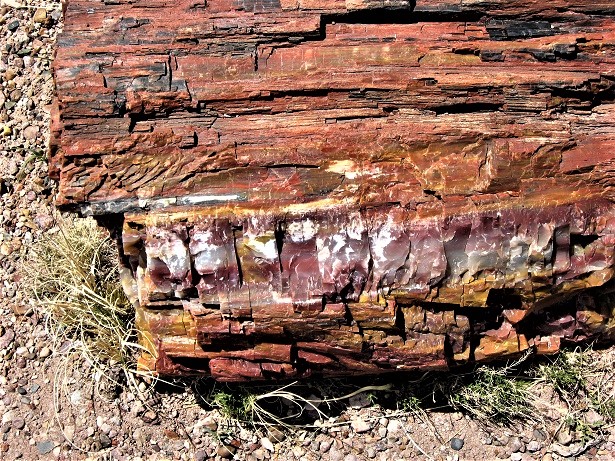
Typically found within a rock, Calcite Crystal sometimes forms inside petrified objects. When this happens, wood can take on a beautiful hue.
Petroglyphs
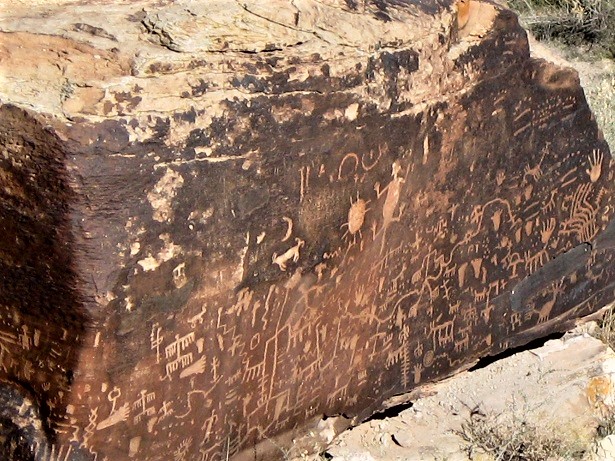
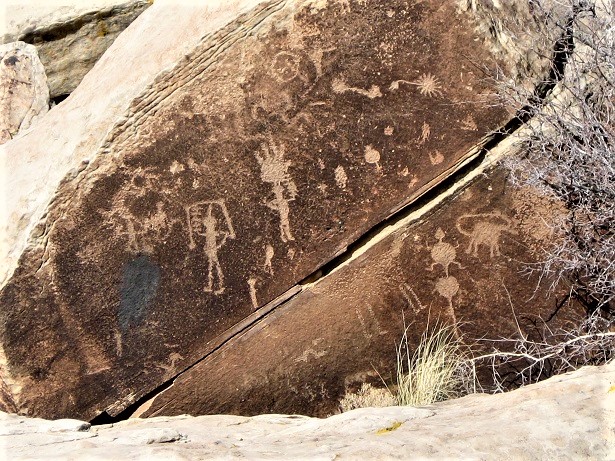
In addition to petrified trees, there are petroglyphs on some of the rocks made by humans who lived in the area between 650 and 2,000 years ago. Like the hieroglyphics and cave art of Europe and Australia, the petroglyphs are impressive artwork.
Theft
Today, the petrified remains of this forest are disappearing due to theft. About 12 tons of petrified wood is stolen from the park annually.
It is illegal to remove fossils from the park; however, you can purchase some souvenir fossils outside the park. Pieces of petrified wood, when polished, can be quite pretty, with or without calcite crystals.
Badlands
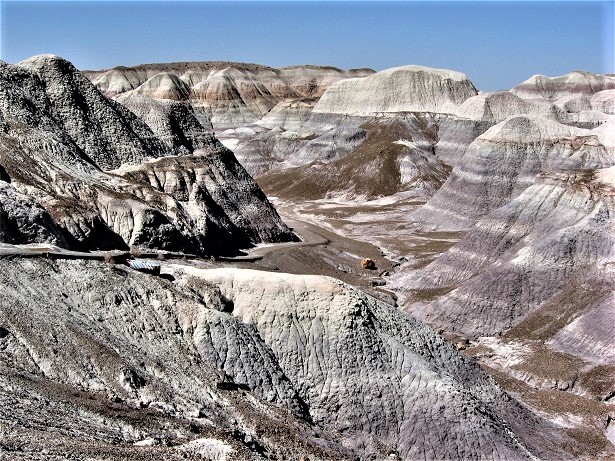
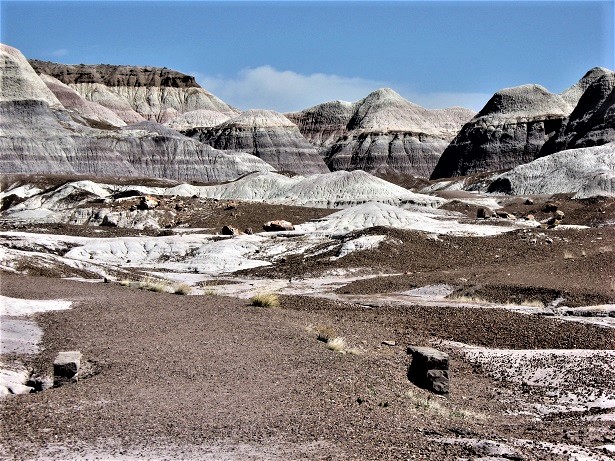
Petrified Forest National Park is not all desert. A large part of the park consists of terrain commonly known as Badlands. Badlands are areas made up of rugged, hilly, dry areas. They are created by the softer soil being taken away by wind and water erosion, leaving canyons, gullies, and strange rock formations behind. There are many Badlands in the United States and extensive Badlands in Canada, Argentina and Spain.
Visit
Petrified Forest National Park is intriguing and well worth a visit, even if you are not interested in the permineralization process. It makes a great day trip for snowbirds spending their winters in Arizona.
The park has no accommodation or campground, but these are available in nearby communities. Overnight parking is not allowed.
